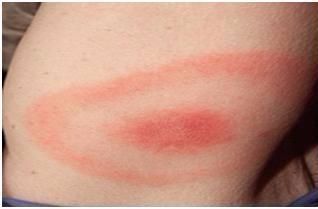Could Lyme Disease Be the Cause of Your Health Condition?

Lyme disease is the fastest spreading infectious disease in the United States, with an estimated 200,000 new cases per year. Lyme is a complex disease that can be highly difficult to diagnose. Currently there is no reliable test to determine if someone has contracted Lyme disease or is cured of it. People with chronic Lyme can have many debilitating symptoms, including severe fatigue, anxiety, headaches, and joint pain. Lyme disease is not just an “East Coast” problem.
In fact, in the last ten years, ticks known to carry Lyme disease have been identified in all 50 states and worldwide. Ticks can vary in size from a poppy-seed size nymphal tick to a sesame-seed size adult tick. The ticks can carry other infectious agents besides the spirochete that causes Lyme disease. The same tick that carries the bacteria that causes Lyme Disease, can also transmit other illnesses. The most common are Babesiosis, Ehrlichiosis, and Bartonella henselae.
Lyme Disease is very complicated to diagnose because:
Lyme bacteria are not always detectable in the whole blood, even in active disease. The bacteria like to hide and travel in the body through the connective tissue rather than the in blood. Every patient responds differently to an infection. Antibodies may only be present for a short time after the infection.
…
Lyme disease has three components, which should be recognized and addressed with treatment:
The presence of spirochete infection and co-infections: The co-infections are bacterial, viral, fungal and parasitic.
Since the spirochetes paralyze multiple aspects of the immune system, the organism is without defenses against many microbes. The illness producing effect of microbial exo- and endotoxins and toxins produced by the host in response to microbial trigger: Most of these are neurotoxins, some appear to be carcinogenic as well, others block the T3 receptor on the cell wall, etc. Decreased hormonal output of the gonads and adrenals is a commonly observed toxin mediated problem in Lyme patients. Central inhibition of the pineal gland, hypothalamus and pituitary gland is almost always an issue that has to be resolved somewhat independently from treating the infection. Furthermore, biotoxins from the infectious agents have a synergistic effect with heavy metals, xenobiotics and thioethers from cavitations and NICO lesions in the jaw and from root filled teeth. The immune reactions provoked by the presence of both toxins and microbes: The immune reactions are largely depending on host factors, such as genetics, prior illnesses, mental-emotional baggage, early childhood traumatization, current exposure to electromagnetic fields (sleeping location, use of cell phones, poor wiring in car or home, etc), food allergies and diet, socio-economic background, marital stress etc.
The treatment of Lyme disease requires 4 distinctive steps:
1 Decreasing toxic body burden/unloading the system – supporting the body’s pathways of elimination (liver/gallbladder, colon, kidneys, lungs, and skin); reducing heavy metal, chemical, electro-magnetic, and microwave exposure.
Michael Karlfeldt, N.D., Ph.D., uses ART testing (autonomic response testing), which is the most advanced and scientifically validated method of muscle testing developed by Dr. Klinghardt, to determine what is stressing the body and what nutritional protocol would best restore balance. Dr. Karlfeldt has been trained by Dr. Klinghardt, one of the world’s foremost authority in the treatment of Lyme Disease.

2921 S. Meridian Rd, Meridian, ID, 83642
telephone – 208-338-8902






